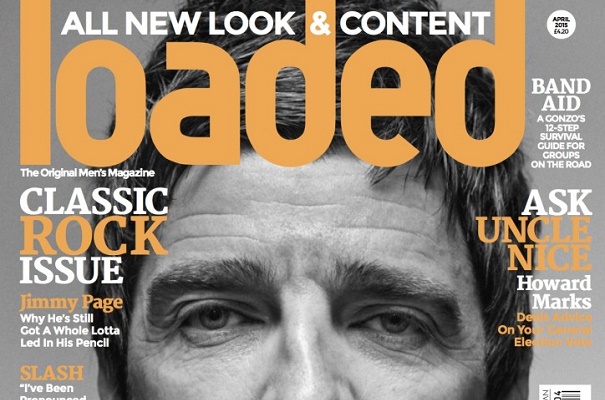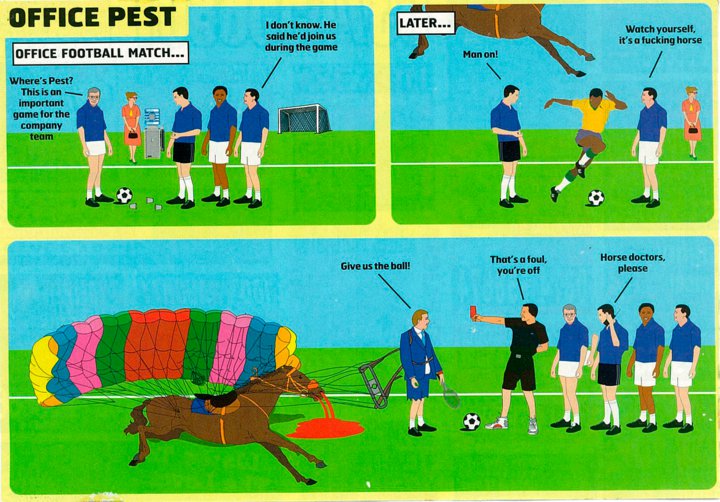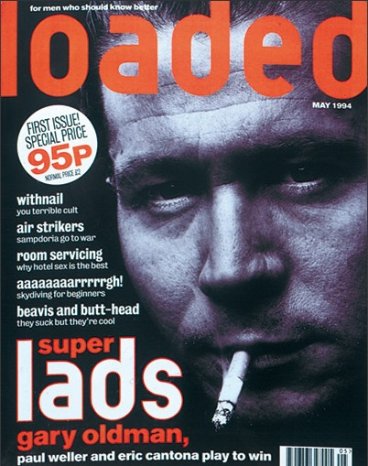
I feel sad about the demise of Loaded magazine, in the same way one gets a tinge of guilt when you hear a band you used to like but had long since forgotten existed has split up. Could I have done more? Should I have been there for them?
Various articles have suggested that the demise of Loaded is another nail in the coffin for media misogyny. But the most recent incarnation of the magazine probably featured less bare flesh than at any time in the magazine’s history. The last issue I picked up, in an airport, featured a lead article about online privacy (albeit illustrated with pictures of Jennifer Lawrence), among other moderately high-minded stuff.
Loaded’s new owners seemed to be making an effort to appeal to readers in their late 30s and early 40s who had read it in its 90s glory years, but had abandoned it when, in the mid-2000s, the entire men’s magazine market became an embarrassment. But it was too late.
Loaded, from its launch in 1994 up until around 2000, was a brilliant, anarchic read. Ben Marshall, who wrote for the original incarnation, told Little Atoms the magazine had been run like a fanzine. “[Founding editors] James Brown and Tim Southwell had a fanzine mentality,” says Marshall. “Loaded catchphrases like ‘drop me bacon sandwich’ came from young mods they hung around with."
“But because Loaded grew like a fanzine, it also grew chaotically. There were fucking insane amounts of drug-taking. And the thing with that level of chaos is that you get away with it until you don’t get away with it.”
Marshall probably knows more than most. For a year, he lived life writing the Dice Man feature for the magazine (based on the cult Luke Rhinehart book), essentially handing huge life choices over to chance. Marshall went as far as taking heroin for the sake of copy, and even broke up with a girlfriend.
Reading these articles, never mind writing them, was exhilarating. Loaded brought a Gonzoish, boys-in-the-band mentality to everything. It was enormously fun, and funny. The insanely odd and crude Office Pest strip was created by the people who went on to make Modern Toss, now Guardian regulars. And Loaded was one of the earliest mainstream print outlets to feature Charlie Brooker, in the form of his TVGoHome spoof listings (where Nathan Barley originated)

Ironically, for a magazine so associated with “laddishness”, it was the loss of fashion editor Beth Summers that put an end to the golden age of the magazine. In January 2000, Summers was in Italy covering Milan Fashion Week when she suffered a horrendous motorbike crash, leaving her completely incapacitated (In 2004 Summers was awarded £4m in compensation. She will need 24-hour care for the rest of her life). The team were left in shock. “Bad stuff didn’t happen to people like Beth. Bad stuff didn’t happen to people like us,” Marshall wrote in an updated version of Tim Southwell’s Getting Away With It: The Inside Story of Loaded.
Summers was the heart and soul of the magazine, bringing innovation and fun to its fashion pages, miles from the trad men’s magazine aesthetic of suits and watches.
Within months of her accident, most of the original Loaded team had moved on (Brown had already left to edit GQ in 1997). The fanzine mentality fell away, as publisher IPC literally brought Loaded, which had previously had its own office, in-house.
And then there was FHM. FHM relaunched in the late 90s with a simple, cynical formula: “Tits and lists”. Loaded, with sales of 600,000 per issue, did not see any reason to see FHM as a competitor. IPC, watching FHM sales soar to over 750,000, thought differently. Though Loaded had always had its fair share of scantily-clad models (and an odd regular page featuring women photographed at London fetish clubs) it had never been a girly mag per se. But the magazine joined the race for increased nipple counts. “All the stuff that had been said about Loaded was eventually true,” says Marshall. The magazine became cruder, ever more priapic, and, crucially, unfunny. You can get away with a lot if you’re funny.

Having got dragged into this zero-sum game, Loaded now found itself competing not just with other mens’ monthlies, but with the lad’s-mag weeklies and the web. The titles fell by the wayside - Maxim, Nuts, countless others. Loaded was bought from IPC in 2010 and passed through more owners before a management buyout in 2013. Editor Aaron Tinney promised that “girlie shoots” would be a thing of the past, and that he would bring the magazine “back to its roots”.
But the readers who had moved on over 20 years could not be won back. The formula had been lost. Marshall believes the magazine may have been able to “grow with its readers”. “Could it have become a kind of British Rolling Stone? Possibly,” he says. “But it would have needed to talk about things that affected its readers - children, jobs.”
Despite Tinney’s protestations that the 2014 reboot of Loaded would not be an exercise in nostalgia, the very last issue’s cover story was Trainspotting author Irvine Welsh interviewing Oasis’s Noel Gallagher. The April issue also features a Q&A with 90s lad favourite Howard Marks. A previous issue had featured a Britpop 20th anniversary special, again with Gallagher(s) on the front.
The magazine seemingly could not bring back the 90s glory days without replicating them exactly. Crucially, people like me - men in our mid-30s who had once loved Loaded, would not have even thought of buying it, and new readers had no idea what it was. Unlikely as it may have seemed when that first, brilliant, confrontational Gary Oldman cover hit the stands, the magazine for men who should know better has gone gently into that good night.